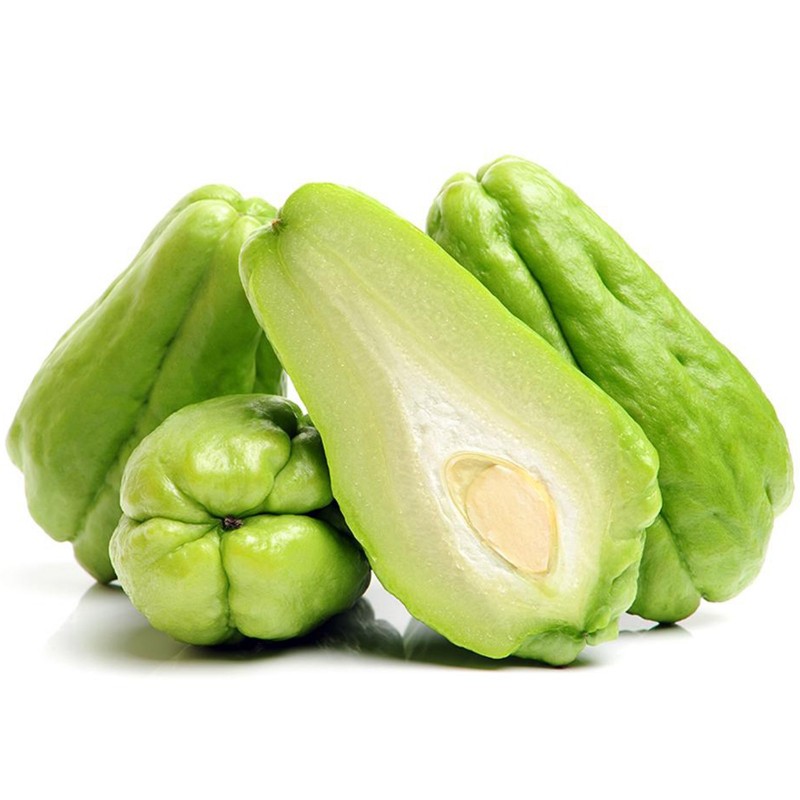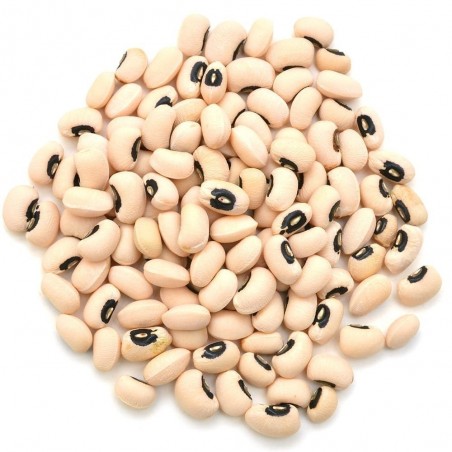
Chayote Seeds (Sechium edule)
Chayote Seeds also as christophene or christophine (Sechium edule)
Chayote (Sechium edule), also known as christophene or christophine, cho-cho, mirliton or merleton (Creole/Cajun), chuchu (Brazil), Cidra (Antioquia, Caldas, Quindio and Risaralda regions of Colombia), Guatila (Boyacá and Valle del Cauca regions of Colombia), Centinarja (Malta), pimpinela
Chayote Seeds (Sechium edule)
Price for Package of 1 seeds.
Chayote (Sechium edule), also known as christophene or christophine, cho-cho, mirliton or merleton (Creole/Cajun), chuchu (Brazil), Cidra (Antioquia, Caldas, Quindio and Risaralda regions of Colombia), Guatila (Boyacá and Valle del Cauca regions of Colombia), Centinarja (Malta), pimpinela (Madeira), Pipinola (Hawaii), pear squash, vegetable pear, chouchoute, choko, güisquil (El Salvador), Labu Siam (Indonesia), Squash, Ishkus or Chowchow (India), బెంగళూరు వంకాయ ( తెలుగు - Telugu), Pataste (Honduras),Tayota (Dominican Republic), Sayote (Philippines)[5] is an edible plant belonging to the gourd family Cucurbitaceae, along with melons, cucumbers and squash.
Chayote is originally native to Mexico where it grows abundantly and has little commercial value. It has been introduced as a crop all over Latin America, and worldwide. The main growing regions are Brazil, Costa Rica and Veracruz, Mexico. Costa Rican chayotes are predominantly exported to the European Union, whereas Veracruz is the main exporter of chayotes to the United States.
The word chayote is a Spanish derivative of the Nahuatl word chayohtli (pronounced /t͡ʃaˈjoʔt͡ɬi/). Chayote was one of the many foods introduced to Europe by early explorers, who brought back a wide assortment of botanical samples. The Age of Conquest also spread the plant south from Mexico, ultimately causing it to be integrated into the cuisine of many other Latin American nations.
The chayote fruit is used in mostly cooked forms. When cooked, chayote is usually handled like summer squash, it is generally lightly cooked to retain the crisp flavor[clarification needed]. Though rare and often regarded as especially unpalatable and tough in texture, raw chayote may be added to salads or salsas, most often marinated with lemon or lime juice. Whether raw or cooked, chayote is a good source of amino acids and vitamin C.
Although most people are familiar only with the fruit as being edible, the root, stem, seeds and leaves are edible as well. The tubers of the plant are eaten like potatoes and other root vegetables, while the shoots and leaves are often consumed in salads and stir fries, especially in Asia. Like other members of the gourd family, such as cucumbers, melons, and squash, chayote has a sprawling habit, and it should only be planted if there is plenty of room in the garden. The roots are also highly susceptible to rot, especially in containers, and the plant in general is finicky to grow. However, in Australia and New Zealand, it is an easily grown yard or garden plant, set on a chicken wire support or strung against a fence.
Description
In the most common variety, the fruit is roughly pear-shaped, somewhat flattened and with coarse wrinkles, ranging from 10 to 20 cm in length. It looks like a green pear, and it has a thin, green skin fused with the green to white flesh, and a single, large, flattened pit. Some varieties have spiny fruits. The flesh has a fairly bland taste, and a texture is described as a cross between a potato and a cucumber. Although generally discarded, the seed has a nutty flavor[citation needed] and may be eaten as part of the fruit.
The chayote vine can be grown on the ground, but as a climbing plant, it will grow into anything, and can easily rise as high as 12 meters when support is provided. It has heart-shaped leaves, 10–25 cm wide and tendrils on the stem. The plant bears male flowers in clusters and solitary female flowers. The plant’s fruit is light green and elongated with deep ridges lengthwise.
Taxonomy
The plant was first recorded by modern botanists in P. Browne's 1756 work, the Civil and Natural History of Jamaica. In 1763, it was classified by Jacquin as Sicyos edulis and by Adanson as Chocho edulis. Swartz included it in 1800 in its current genus Sechium.
Culinary and medicinal uses
The fruit does not need to be peeled to be cooked or fried in slices. Most people regard it as having a very mild flavor by itself (though some find it unpalatable). It is commonly served with seasonings (e.g. salt, butter and pepper in Australia) or in a dish with other vegetables and/or flavorings. It can also be boiled, stuffed, mashed, baked, fried, or pickled in escabeche sauce. Both fruit and seed are rich in amino acids and vitamin C.[8] Fresh green fruit are firm and without brown spots or signs of sprouting. Smaller ones are more tender.
The tuberous part of the root is starchy and eaten like a yam (can be fried). It can be used as pig or cattle fodder, as well.
The leaves and fruit have diuretic, cardiovascular and anti-inflammatory properties, and a tea made from the leaves has been used in the treatment of arteriosclerosis and hypertension, and to dissolve kidney stones.
In Louisiana Creole and Cajun cuisine, the fruit, known as mirliton (pronounced IPA: [ˈmɜːlɪtɒn]) also spelled mirletons or merletons (plural—the r is often silent, e.g. Cajun me-lay-taw or urban Creole miʁl-uh-tɔ̃ns) is a popular seasonal dish for the holidays, especially around Thanksgiving, in a variety of recipes.
Chayote is an important part of traditional diets across Mesoamerica, and can be found in a variety of dishes.
In the Philippines, the plant is known as "Sayote" and is grown mostly on Mountainous part of the country such as Benguet and parts of Cordillera Administrative Region. Chayote is used in many kinds of dishes such as soup, stir-fried vegetables and chop suey.
In Indonesia, chayotes are called labu siam and widely planted for their shoots and fruit. It's generally used in Sundanese food as "lalap" and one of ingredients for Sundanese cuisine called "sayur asem".
In Taiwan, chayotes are widely planted for their shoots, known as lóng xü cài (龍鬚菜, literally "dragon-whisker vegetable"). Along with the young leaves, the shoot is a commonly consumed vegetable in the region.
In Thai cuisine, the plant is known as sayongte (Thai: ซายองเต้) or fak maeo (Thai: ฟักแม้ว, literally meaning "Miao melon"). It grows mainly in the mountains of northern Thailand. The young shoots and greens are often eaten stir-fried or in certain soups.
In Brazil and other Latin American countries, it is breaded and fried, or used cooked in salads, soups and soufflés.
In Darjeeling, India and Nepal, the plant and fruit is called ishkus (इस्कुस in Nepali), probably derived from the word squash. Its shoots, fruit and roots are widely used for different varieties of curries.
Chayote is also popular in South Indian cuisine. It is popularly referred to as "Bangalore brinjal (Bengaluru vankayya)", called in Kannada as "seeme badanekai" - brinjal/eggplant/aubergine of the plateau. It is used in vegetable stews like "sambar" and "palya".
In Tamil Nadu in South India, it is known as "chow chow" and widely used in everyday cooking for "sambar" or "kootu". In Andhra Pradesh, it is called Bengaluru vankayya and sold in vegetable markets in the name of "chow chow".
In Réunion, the French overseas territory in the Indian Ocean near Mauritius, chou chou, as it is known, is served in many dishes especially in the highlands. A popular starter of Chou chou au Gratin (baked with a cheese sauce), as a side with a meal and even as a desert.
Folklore
"Apple pie"
In Australia, where it is called choko, a persistent urban legend is that McDonald's apple pies were made of chokos, not apples.[ This eventually led McDonald's to emphasise the fact that real apples are used in their pies. This legend was based on an earlier belief that tinned pears were often disguised chokos. A possible explanation for the rumour is that there are a number of recipes in Australia that advise chokos can be used in part replacement of canned apples to make the fruit go farther in making apple pies. This likely arose because of the economies of "mock" food substitutes during the Depression Era, shortages of canned fruit in the years following World War II, and the fact apples do not grow in many tropical and subtropical parts of Australia, making them scarce. Chokos, on the other hand, grow extensively in Australia, with many suburban backyards featuring choko vines growing along their fence lines.
Another possible reason for the rumour of McDonald's apple pies containing chokos was that it was thought that apples would degenerate and become soggy and inedible in a McDonald's pie, whereas chokos are well known to retain their firmness and consistency after cooking, freezing, and reheating. It was thought that the "chunks" of apple in the pie were in fact chunks of choko, and the sauce and filling were simply a spiced, apple-flavoured concoction.
Mummies
Due to its purported cell-regenerative properties, it is believed as a contemporary legend that this fruit caused the mummification of people from the Colombian town of San Bernardo who extensively consumed it. The very well preserved skin and flesh can be seen in the mummies today.
| Perennial ? | Perennial plant : Yes |
|---|---|
| Válogatott magok? | Válogatott magvak |
| Manufacturer ? | Manufacturer: Seeds Gallery |


Your review appreciation cannot be sent
Report comment
Report sent
Your report cannot be sent
Írd meg véleményedet
Review sent
Your review cannot be sent
🌍 Globális szállítás az EU-ból
Világszerte szállítunk az Európai Unióból ajánlott küldeményként, átvételi visszaigazolással.
📦 Csomagkövetés
A csomagod követéséhez jelentkezz be a fiókodba, majd menj a Rendeléstörténet > Részletek menüpontra, ahol megtalálod a követési számot.
Nemzetközi követés: 17Track
RGxxxxxxHR típusú számok esetén: Posta.hr követés
🕒 Kérjük, várj legalább 24 órát a feladás után, hogy a követési adatok elérhetővé váljanak.
⚠️ Fontos tudnivalók
Utánvét nem elérhető.
Rendszeresen ellenőrizd a spam vagy kéretlen mappát az e-mail fiókodban az értesítésekért.
Kérjük, kizárólag a weboldalunkon található kapcsolati űrlapot használd.
Közvetlen e-mailekre nem biztos, hogy válaszolunk.
📱 Telefonszám megadása kötelező
Rendeléskor kötelező megadni a mobiltelefonszámodat az országkóddal együtt.
Példa: +36 30 123 4567
🚚 Szállítási feltételek
A nyomon követett csomag átvételekor átvételi aláírás szükséges.
Ne rendelj, ha:
postafiókba szeretnéd a csomagot
nem leszel otthon a kézbesítéskor
a csomagot a szomszédnak szeretnéd átadni (❌ ez nem lehetséges)
📬 Ha postafiók címet adsz meg, és a csomag elveszik, nem jár visszatérítés.
↩️ Csomag visszaküldése és újraküldés
Ha bármilyen okból visszaküldik a csomagot:
Visszaküldési díjat kell fizetned: 2 €
Valamint az újraküldés költségét is
⏱ Késések és nyomon követés
Ha a csomag még mindig a feladónál szerepel a követésben, az azt jelenti, hogy úton van.
A legfrissebb információkért keresd meg a helyi postahivatalt a követési számmal.
Nem vagyunk postaszolgáltató, így a csomagot nem tudjuk helyetted követni.
Nem vállalunk felelősséget a szállítás időtartamáért.
🔍 Eltűnt csomag ügyében vizsgálatot csak 30 nappal a feladás után indíthatunk.
✈️ Szállítási opciók
| Szállítás típusa | Feldolgozási idő | Biztosítás | Lehetséges késések | Megjegyzés |
|---|---|---|---|---|
| Standard | 7–10 munkanap | ❌ | 7–14 munkanap | Legolcsóbb opció |
| Prioritás | 1–7 munkanap | ❌ | 3–10 munkanap | Prioritásos feldolgozás – nem feltétlenül gyorsabb szállítás |
| Biztosított | 1–7 munkanap | ✅ | 3–10 munkanap | Visszatérítés elvesztés esetén (max. 150 € értékig) |
🕒 Várható szállítási idő:
Európai Unión belül: 3–20 munkanap
Világszerte: 5–30 munkanap
USA példák: 27, 22, 19, 17, 13 nap
💳 Fizetési módok
💶 Banki átutalás (SEPA / IBAN / SWIFT-BIC)
A fizetés leírásában kötelező megadni a rendelési számot (pl. SGS-19811702).
Ha hiányzik ez az adat, késedelmet vagy rendelés törlést okozhat.
Ha a befizetés nem érkezik meg 7 napon belül, a rendelést automatikusan töröljük.
🅿️ PayPal
Csak euróban történő fizetést fogadunk el PayPal-on keresztül.
Kérjük, a fizetéskor válaszd az eurót mint pénznemet.
💳 Bankkártyás fizetés
Kártyás fizetés a weboldalunkon keresztül: Exotic Seeds Store
Elfogadott kártyák: Visa, MasterCard, American Express, Diners Club, UnionPay, JCB, Discover stb.
💡 A vásárló viseli az esetleges tranzakciós díjakat.
Kérjük, küldd el a fizetés igazolását a gyorsabb feldolgozás érdekében.
📅 Egyéb információk
Hétvégén (szombat, vasárnap) nem dolgozunk fel rendeléseket és nem szállítunk.
Mindig olvasd el a fontos közleményeket a weboldalunkon (ünnepnapok, speciális feltételek stb.).
📫 Fontos:
Ne küldj közvetlen e-mailt nekünk. Csak a weboldalunkon lévő kapcsolati űrlapot használd.
Related Products



















